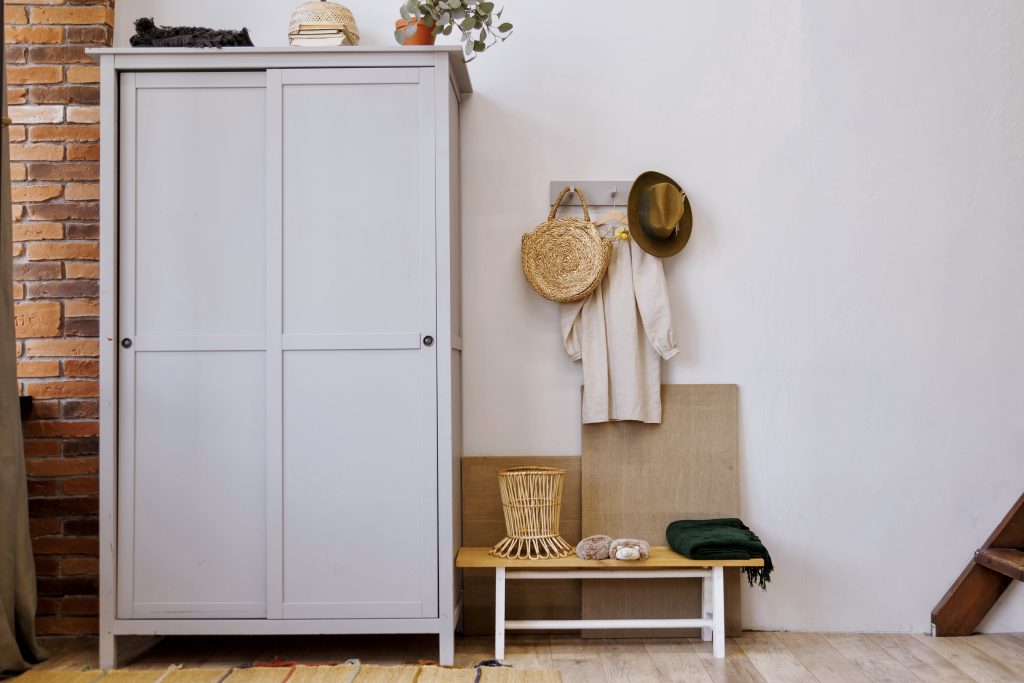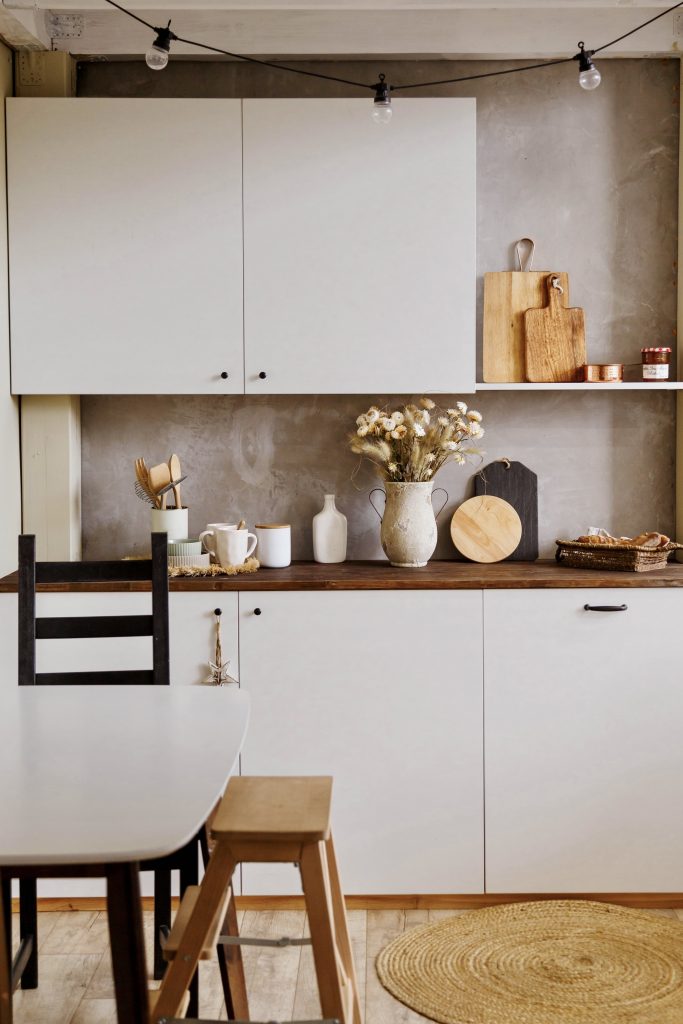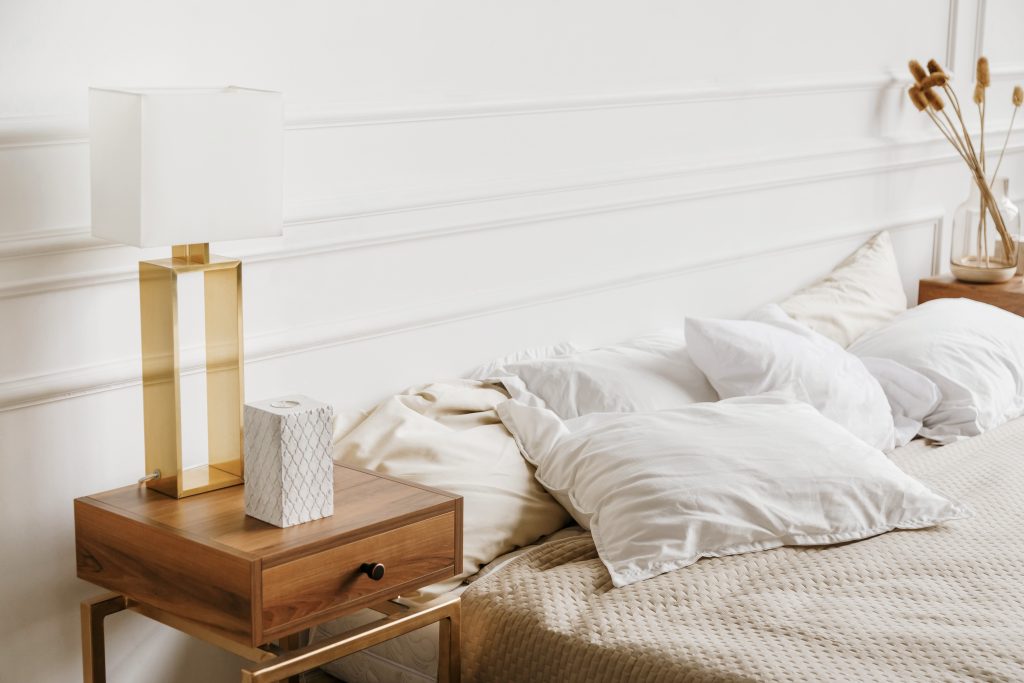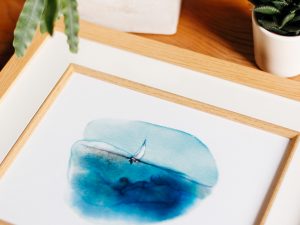How do you make a small room look bigger? Let me guess. You’ve tried mirrors opposite a window, magic colours to expand the walls, ditched the curtains to allow more light in…
There are a myriad design tips out there. Some are helpful and others are a waste of your time. I’m here to tell you what is proven to work.
Curious? Read below to discover the science-based, proven trick to make a small room look bigger.
Design meets science: the origins of this home decor trick
The internet is full of information on how to make a room feel bigger. I’ve read many of the top posts and articles on the topic and, while most offer useful advice, it’s hard to know what works.
Who has the time to try them all?
So I dug deep into the available studies on visual perception and the built environment. And I found a few studies that are pure gold, including a critical review from NASA and a research report on colour(PDF). I also applied the principles of the interior design process.
This allowed me to create a cohesive formula that you can easily follow when decorating a small room.

The ABCD formula to make a small room look bigger
Here it is! The formula I put together and conveniently named ABCD. I recommend following the steps in order to understand the science behind it and to make the most of it.
A for Ask yourself
Let’s start with some self-reflection. After all, I’m both an Interior Consultant and a Wellbeing Coach! OK, think about these questions before you decorate a small room:
- What are the benefits of a small room? And the downsides?
- How will the illusion of more space benefit me?
- Do I really want to make this room feel bigger? Or is there something else bothering me?
This formula is powerful, have no doubt about it.
An important point, though: it will dominate the resulting decor style. This means that the steps you’re about to read will complement some decor styles. The formula will be less compatible with others, however — sorry, maximalists.
Therefore, it’s best to use it only in rooms that really need it. Such as a compact living room, a small kitchen or even a narrow hallway. What about the toilet under the stairs? Best to keep it cosy.
B for Brightness
Are you ready to pick up the paint roller? Good, because it’s time to get messy. Can you guess what the ideal colour is to make a small room look bigger?
Yes, white is king.
White reflects the light around the room, reducing shadows and increasing brightness. Differences in light, when one part of the room is bright but the other is dungeon-dark, is what makes small spaces feel like a shoebox. My contemporary living room makeover is a straightforward example of how to use white in a small room.
But you can also use colour!
You can paint the walls and ceiling a much lighter tint of whatever colour you want. No limits here. For example, you could add plenty of white paint to your chosen colour tin. It’s also good to know that walls and ceilings can be different colours, as long as they’re both bright.
Secret tip: light, desaturated paint colours are ideal to make a small room look bigger.
What about the “cool colours make the walls recede” tip that you may have heard of. Will the room look bigger if you paint it cool white or light blue?
Not necessarily.
After all these years there is no actual evidence to support that wildly popular claim. If you’re interested in learning more about colour psychology and interior design, I’ve written a blog post to help you separate the facts from the myths.

C for Contrast
If your mission is to enhance the sense of spaciousness in a room, then high contrast is your number one enemy.
The concept of contrast can sound a bit abstract. Low contrast means that when you squint your eyes and look around the room, objects blend. But, if the contrast is high, the outline of stuff is still pretty much obvious as it stands out against the background.
There is an easy way to decrease visual contrast throughout the room:
Use materials and fabrics in slightly different, but always light, colours. This applies to the entire room’s colour scheme, from wall colour to furnishings and accessories.
In an ideal low-contrast scenario, everything inside the room would be the same colour. In reality, you can include other light colours to make the space more exciting.
Indeed, you can combine several of these light and desaturated colours as long as they’re similar. The purpose of this is to ensure objects don’t stand out too much against the background, whilst providing variety with the colour range.
D for Declutter
Marie Kondo is knocking on your door, and she looks determined. Quick, get rid of the clutter before she breaks in with the bin bags!
It’s amazing how much stuff we accumulate over the years. Get rid of anything that doesn’t add value to your life, both from the practical and aesthetic points of view. If you don’t use it or love it, donate it to the charity shops or sell it online.
Excess stuff provides too many focal points for your eyes to focus on, eliminating the soft-focus atmosphere needed. This makes any effort to make a small room look bigger fail miserably.
Declutter the space and you will feel the room grow around you — and keep Marie Kondo away.
When it comes to styling the room, use a few carefully selected accessories to add interest. Make sure you respect the high-brightness, low-contrast guidelines. And — instead of playing with the colour of ornaments — try using shape, texture and finish to make the space interesting.

Ready to make your small room feel more spacious?
As you can see, this formula is quite strict style-wise. It seems most suited for all-white Scandinavian or minimalist interiors. Yet, other styles fit this formula. Think laid back Californian, earthy Mediterranean and even shabby chic!
I want to share this formula with you to show you what works. Now, armed with this knowledge, you can choose what you want to do. Try different things, be creative, and remember there is no right or wrong when you’re experimenting with design.
And If you’re looking for more guidance, you can book a personalised design consultation with me. I will help you get it right, saving you precious time in the process!
I’d love to hear from you in the comments below. Are there any other tips and tricks that help to make a small room look bigger?
All images are licensed by Adobe Stock.





